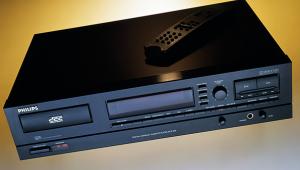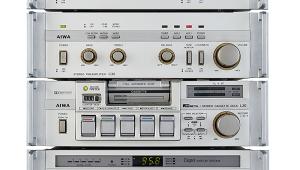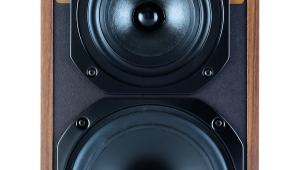Chord Choral
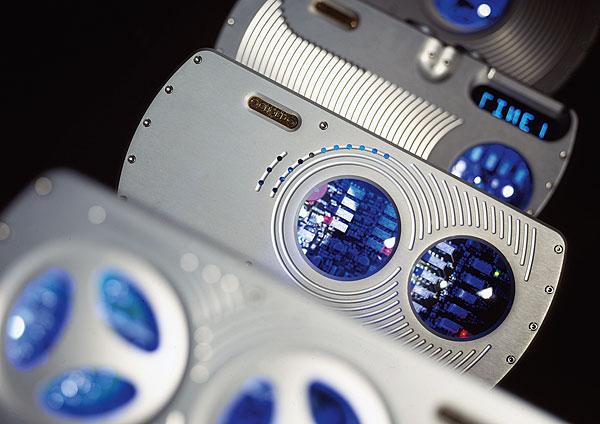
 The British company has unveiled a system with the same stunning livery as its highly successful DAC64. Ken Kessler reaches for the blue yonder
The British company has unveiled a system with the same stunning livery as its highly successful DAC64. Ken Kessler reaches for the blue yonder
Sometimes manufacturers do listen! After Chord Electronics' DAC64 proved to be such an immediate hit, the company decided to figure out why everyone fell in love with it. Sure, it sounded wonderful. Yes, it had neat features like balanced and single-ended operation and its three-setting, user-adjustable RAM buffering. But that wasn't it.
Chord soon identified the aspect of the DAC64 that elicited the choruses of 'oohs' and 'aahs'. It was, in fact, the enclosure in which it was housed. A solid block of heavy metal measuring 60x335x170mm (hwd), a lozenge with a circular window looking in on the component-filled PCB, it screamed 'quality', both in its fit and finish, and the signature glimpse at the innards. There were no lights kept under bushels here. No lights indeed: the DAC64 lights up a too-cool blue.
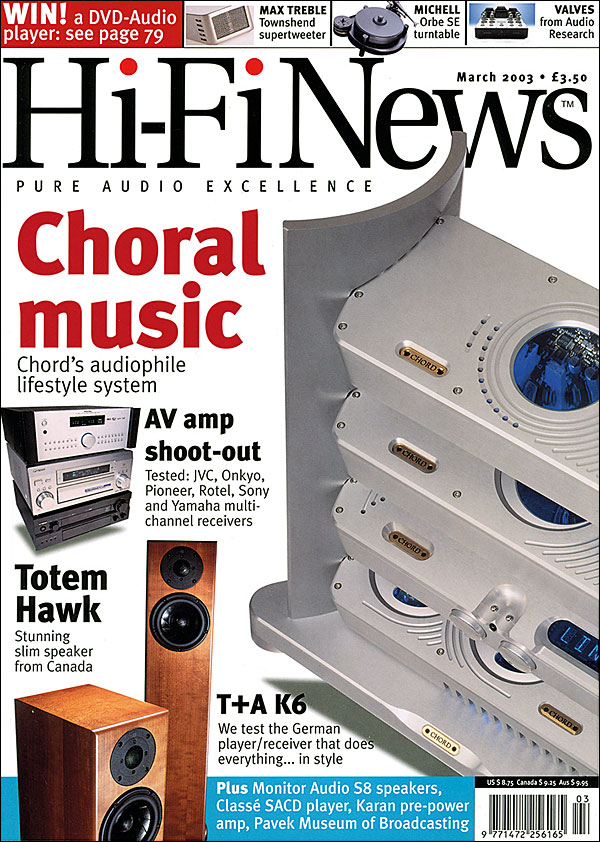
When someone suggested to Chord's owner, John Franks, that he must follow the DAC64 with 'the rest of the system', Franks responded with both the obvious – a preamp and a power amp – and the not so obvious – a phono stage.
For The Record
Considering the high-tech/digital age nature of Chord Electronics, a few were surprised to learn that DAC, preamp and power amp would be joined by a phono stage. And, to ice this particularly tasty cake, Franks arrived at the 2002 London show with a tailor-made rack, which held the four components at angles so you could gaze lovingly on their internal structures. Franks is smart: not only did he house each component in the same enclosure, he provided every one of the trio with blue-lit windows of their own.
But let's start with the Prima preamp, a device so downright sexy, so delightful and so 'tactile' to use that it should be sold alongside Dupont lighters and Montegrappa fountain pens. Because it comes with a chunky, machined-from-solid learning remote [p129], with blue-lit touchscreen and no-brainer operation, the Prima is minimalist without tormenting the user.
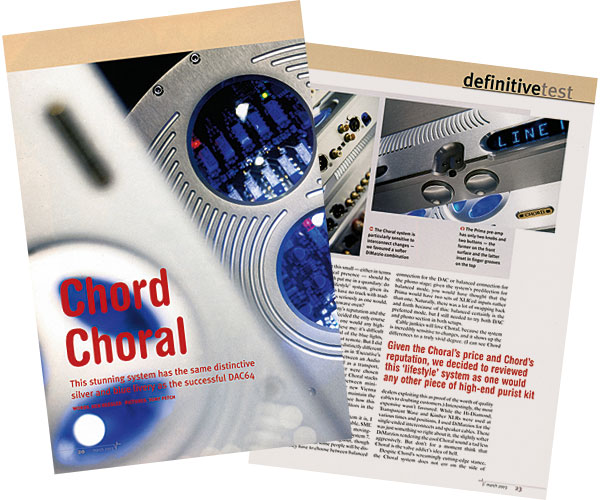
Through The Windows
The remote is capable of operating up to ten devices with no fewer than 42 commands per device, so the Prima itself need bear but two knobs and two buttons, the former fitted to the front surface and the latter inset in two finger grooves on the top. The left button toggles through the inputs, while the right selects tape; the left knob sets level, the right balance. All you see across the back are an on/off toggle, a pair each of XLRs for balanced input and output, a pair of phonos for tape out, and four pairs for single-ended line-in.
You'll recognise the Symphonic phono stage because it has not one window but two. Once you learn the settings, you can tell at a glance what they are because of internal lighting. The Symphonic provides both single-ended and balanced inputs and outputs, and the unit is fully configurable for impedance from 25ohm to 47kohm, and gain of 0-60dB, with a selectable rumble filter (which also adds IEC roll-off to the RIAA equalisation). However, it's here that Franks committed an omission that suggests that the man doesn't get out much.
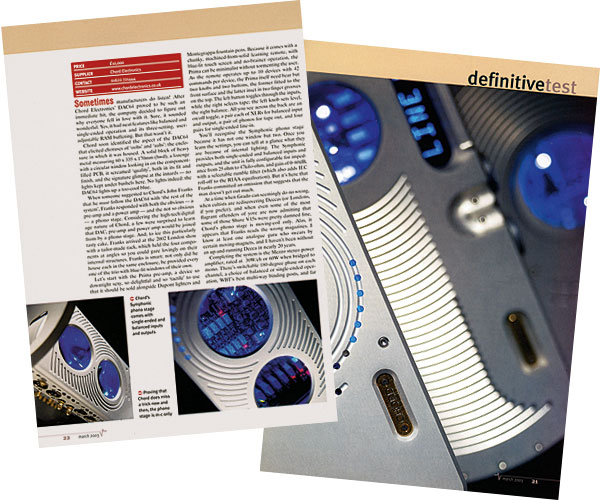
At a time when cartridge-manufacturer Grado can seemingly do no wrong, when cultists are rediscovering Decca pick-ups (or Londons, if you prefer), and when even some of the most flagrant offenders of yore are now admitting that some of those Shure V15s were pretty damned fine, Chord's phono stage is moving-coil only. Alas, it appears that Franks reads the wrong magazines. I know at least one analogue guru who swears by certain moving-magnets, and I haven't been without an up-and-running Decca in nearly 20 years.
Completing the system is the Mezzo stereo power amplifier, rated at 30W per channel or 60W when bridged to mono. There's switchable 180° phase on each channel, a choice of balanced or single-ended operation, WBT's best multi-way binding posts, and far more grunt than anything this small – either in terms of output or sheer physical presence – should be able to deliver. All of which put me in a quandary: do I treat the Choral as a 'lifestyle' system, given its obvious appeal to those who have no truck with traditional gear, or do I treat it as seriously as one would, say, an amp the size of a microwave oven?
Given the price, the company's reputation and the standards of this magazine, I decided the only course of action was to review this as one would any high-end, purist equipment. And believe me, it's difficult to ignore the indisputable appeal of the blue lights, the made-to-measure rack and that remote handset.
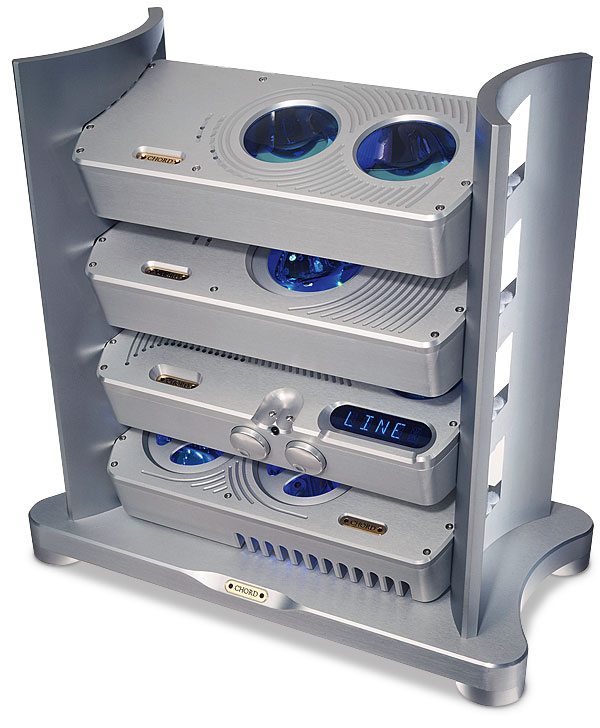
Systems Go
But I did try to wear two hats, using it in two distinctly different contexts. In keeping with 'lifestyle', as in 'Executive's Office System', I wired the stack between an Audio Analogue Maestro CD player used as a transport, and a pair of LS3/5As. The latter were chosen because I suspect that most complete Choral stacks will find themselves sandwiched between mini monitors. Think Krell LAT-1s or the new Vienna Acoustics series for those who want to maintain the all-metal mien, or – and I'd love to see how this looks – the Sonus faber Cremona Auditor speakers in the new graphite finish.
To test the Choral's mettle as the five-figure system it is, I also used it with an SME 10 turntable equipped with an SME Series V tonearm and Transfiguration Temper moving-coil cartridge, driving a pair of Wilson WATT Puppy System 7 loudspeakers.
On Balance
In both of these set-ups, I used balanced throughout, though it soon became apparent that some people will be disgruntled when they have to choose between balanced connection for the DAC or balanced connection for the phono stage. Given the system's predilection for balanced mode, you would have thought that the Prima would have two sets of XLR'ed inputs rather than one. Naturally, there was a lot of swapping back and forth because of this. Balanced certainly is the preferred mode, but I still needed to try both DAC and phono section in both set-ups.





